From Scotty Moore to Johnny Marr and Beyond, the Gibson ES-295 is a True Golden Era Classic
The hollowbody equivalent of the original Les Paul Goldtop, this rare electric archtop helped start the rock and roll revolution
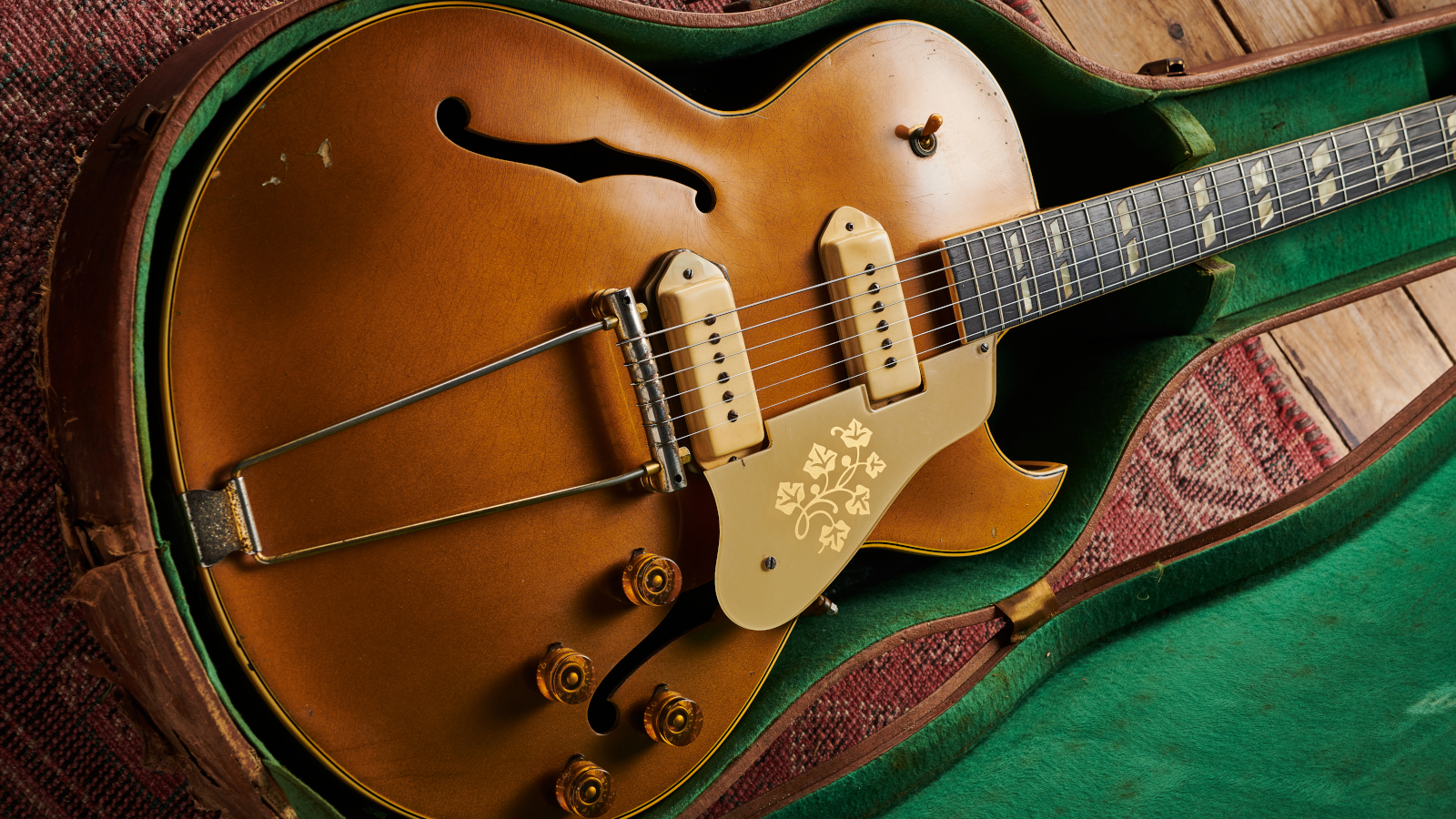
When Ted McCarty joined Gibson as CEO in 1948, he immediately set about turning the post-war operation around financially, before pursuing the development of new and exciting electric guitar designs as company President.
Released in 1949, the single pickup ES-175 is the predecessor of the dual P-90 ES-295 and one of the earliest McCarty ‘golden era’ models.
Essentially an electrified laminate-body version of the carved spruce top L-4C acoustic model, the mid-priced $175 ES-175 set the template for the $295 ES-295 electric archtop released a few years later in 1952.
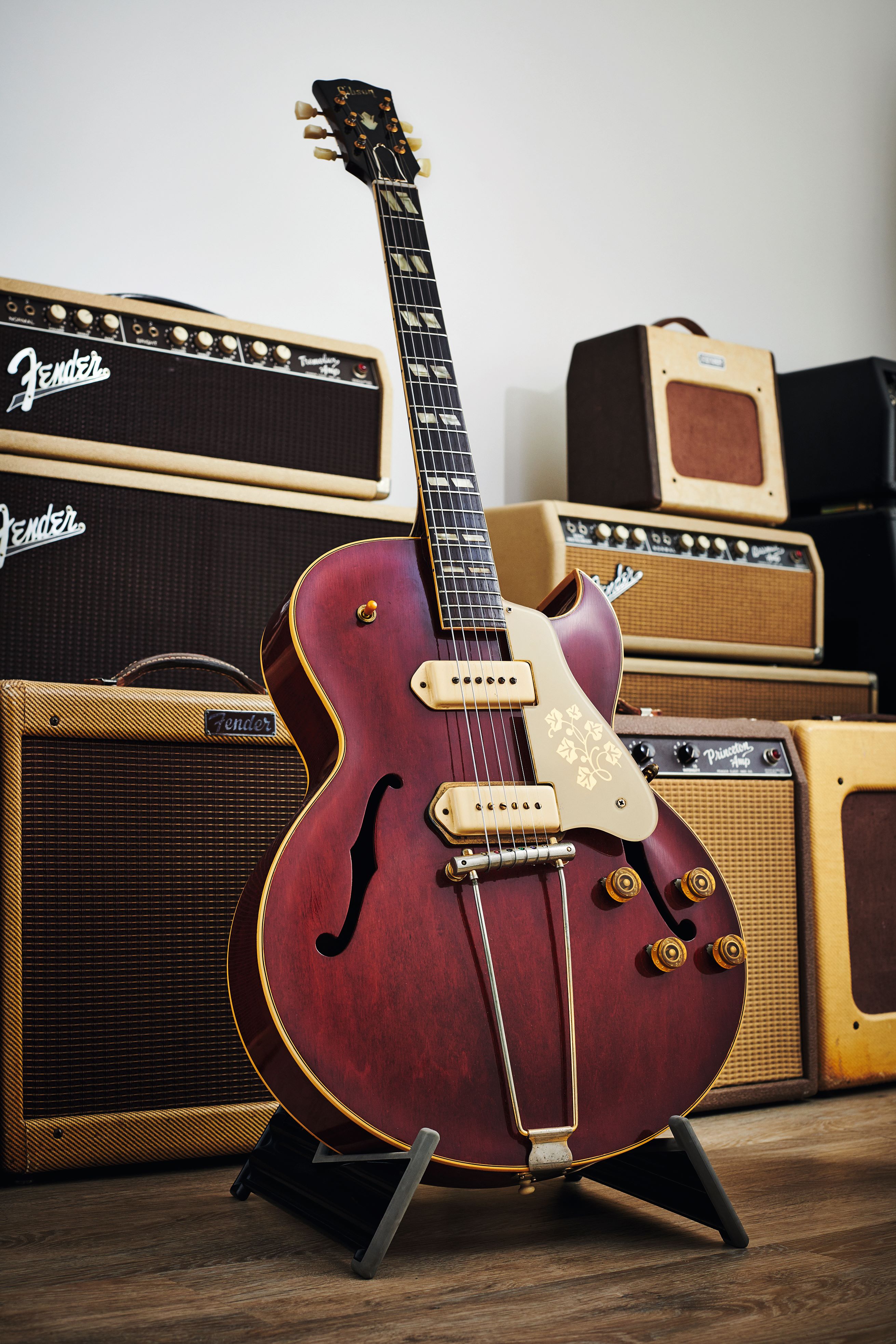
Aside from rare exceptions such as the red 1955 example pictured above, the ES-295 is easily distinguished by its all-gold finish (‘all-gold’ aside from headstock face and fingerboard) and clear/cream back-painted pickguard embossed with a gold Gibson Century lap steel-style floral design.
The ES-295 is easily distinguished by its all-gold finish
The ES-295 does, however, have much in common with the ES-175. Sporting unbound f-holes along with a triple-bound top and single-bound back, both the ES-175 and ES-295 measure 16 1/4-inches wide by 3 3/8-inches deep and feature a laminated maple body construction with a sharp Florentine cutaway.
With an unbound headstock featuring mother-of-pearl Gibson logo and crown motif inlays, both models’ single piece mahogany necks have a 24 3/4-inches scale length and join the body at the 14th fret.
In 1955, the ES-295 changed in tandem with the ES-175 from a 19-fret to a 20-fret design; otherwise the instruments’ Brazilian rosewood fingerboards retained the same single-bound, double-parallelogram mother-of-pearl inlay design throughout their production.
Get The Pick Newsletter
All the latest guitar news, interviews, lessons, reviews, deals and more, direct to your inbox!
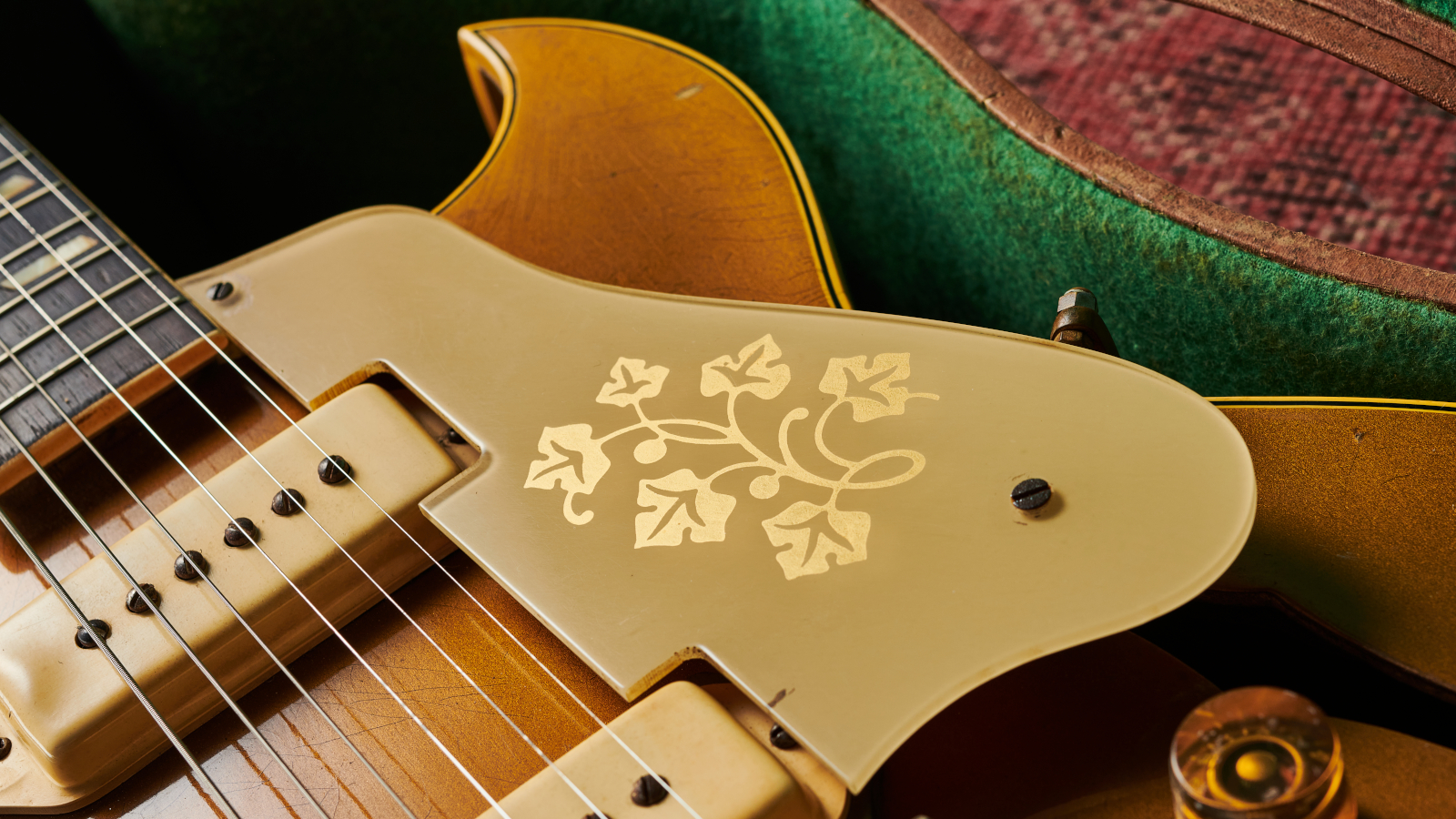
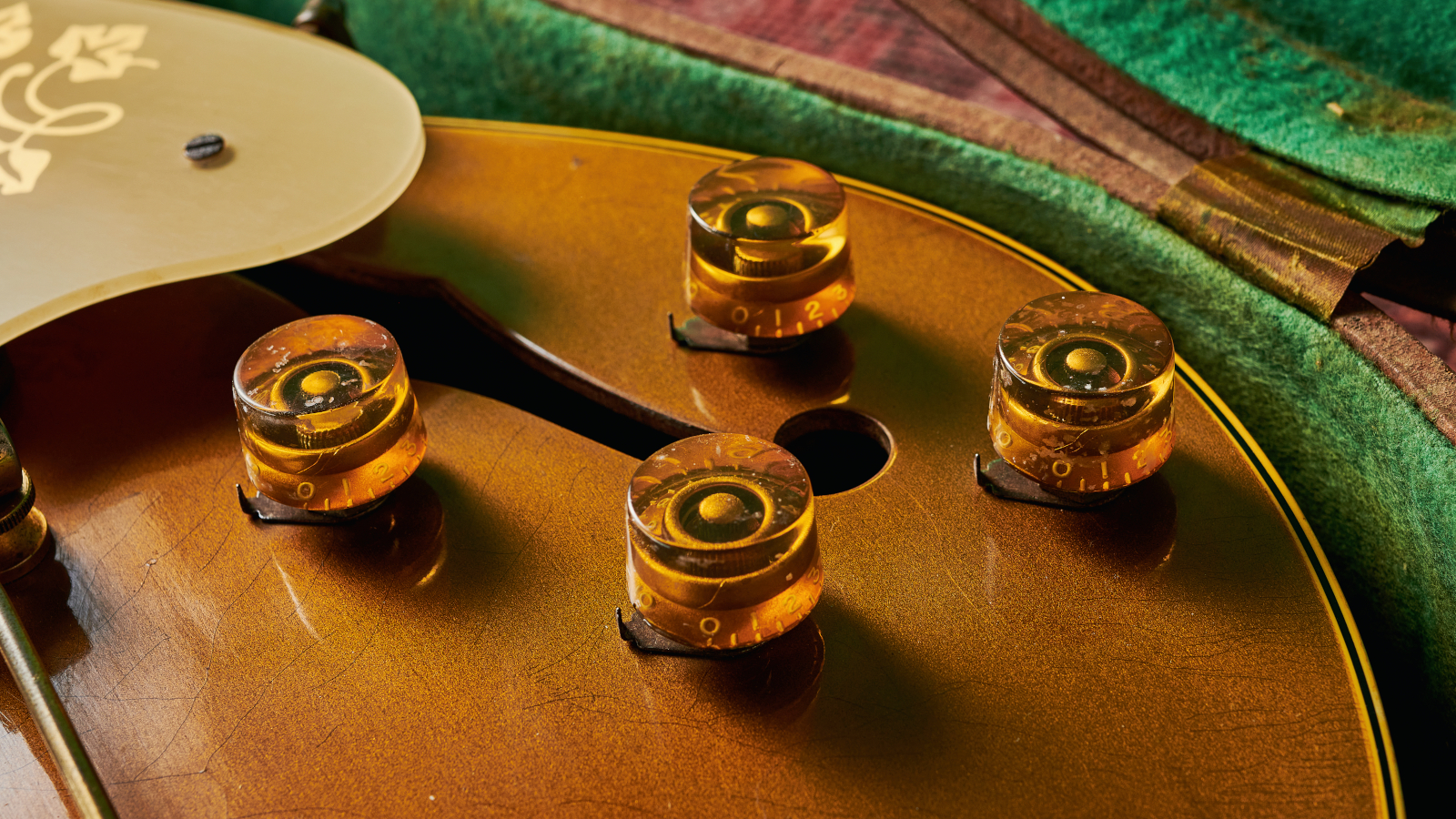
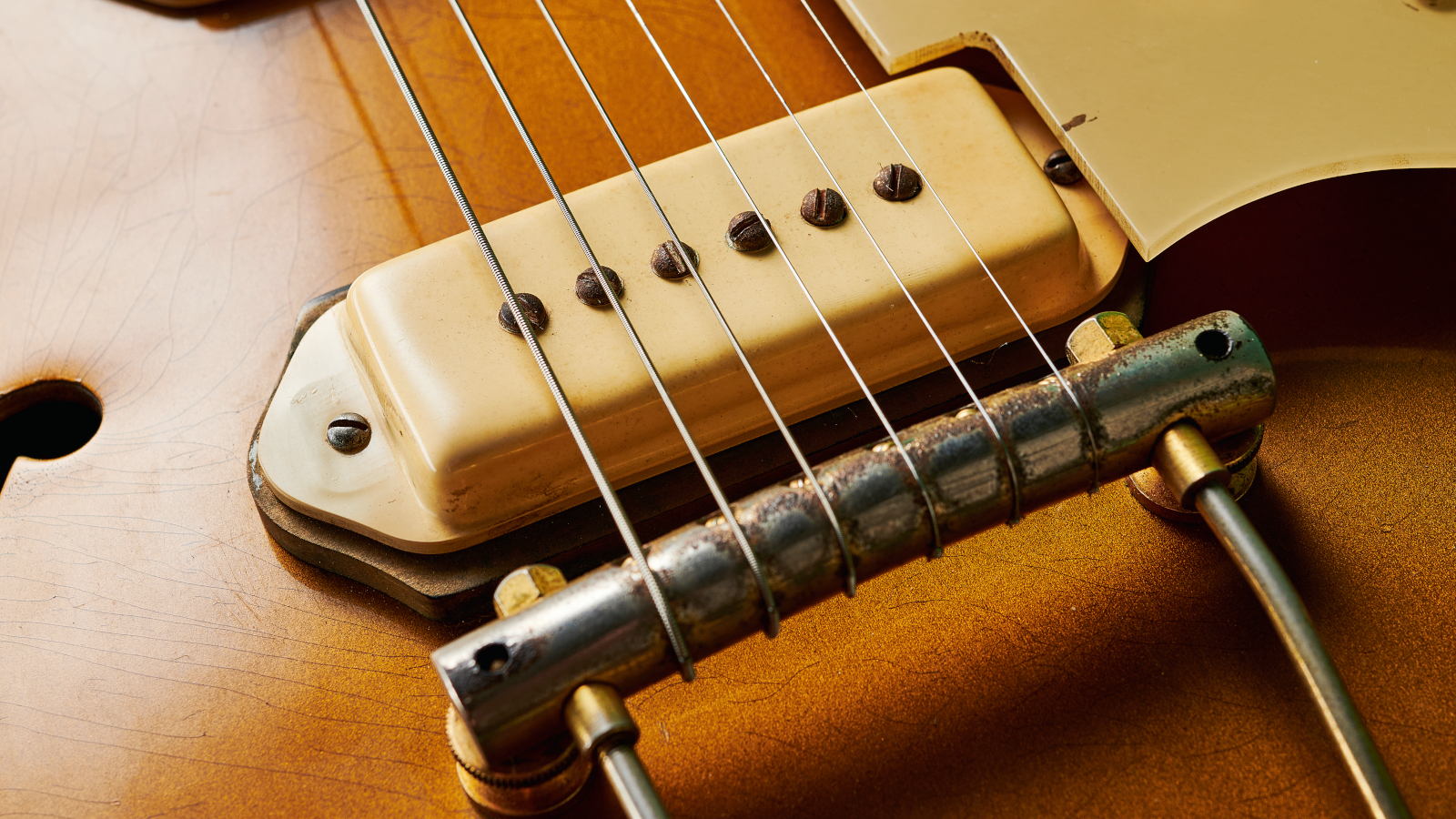
The inspiration for the ES-295 was born from an all-gold finish ES-175 which was custom-ordered by Les Paul and completed in late-1951, before being presented to a disabled guitarist.
In turn, the ES-295 set the mold for the perennially popular dual pickup version of the ES-175, the ES-175D, released in 1953 (although it wasn’t unheard of for people to custom-order dual pickup ES-175s prior to this).
Les Paul, it seems, expressed a strong preference for gold finishes over Gibson’s traditional sunburst, and with the ES-295 joining Gibson’s line-up in 1952 alongside the Les Paul ‘Goldtop’ Model, the golden era appeared to be truly underway.
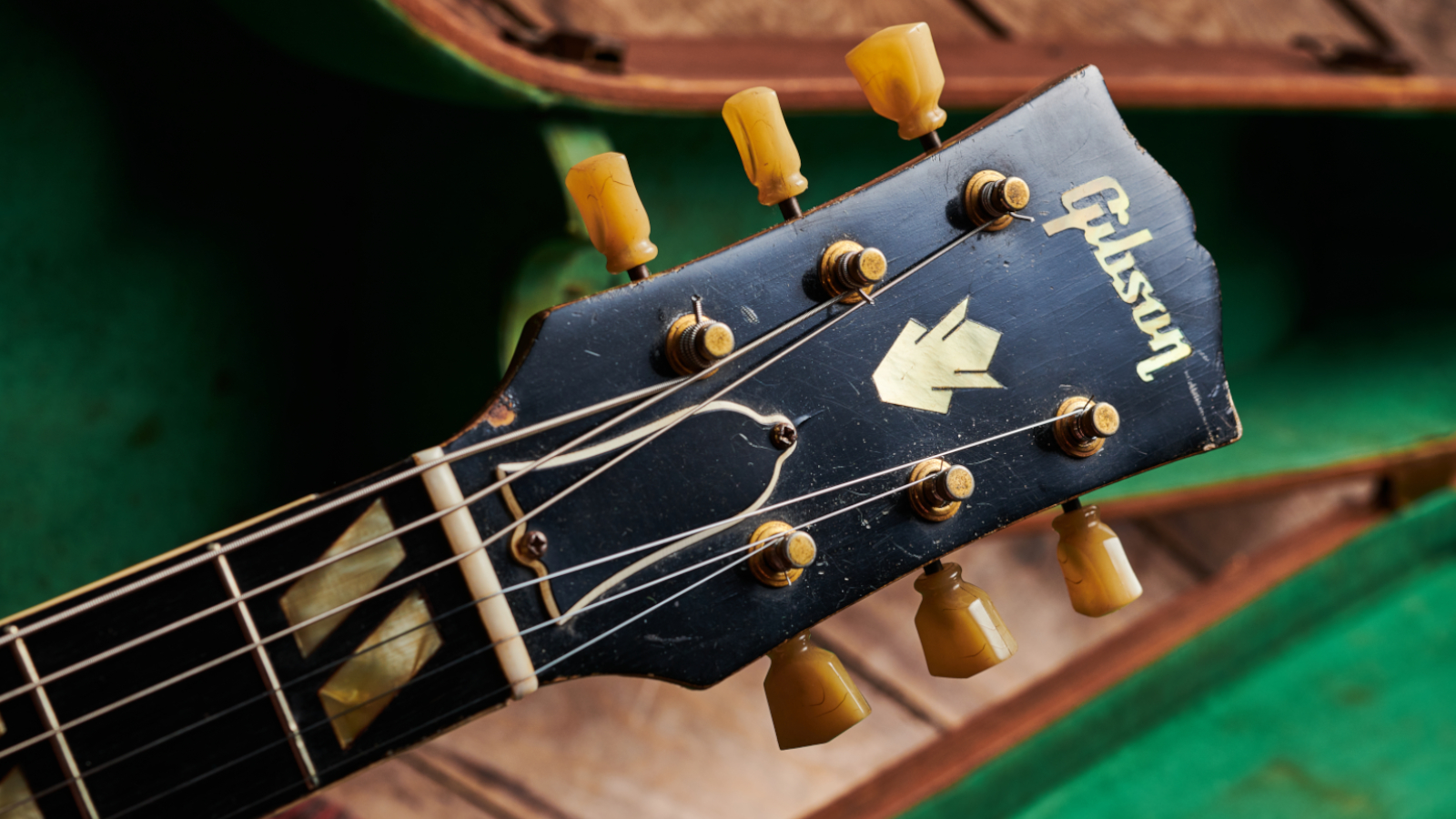
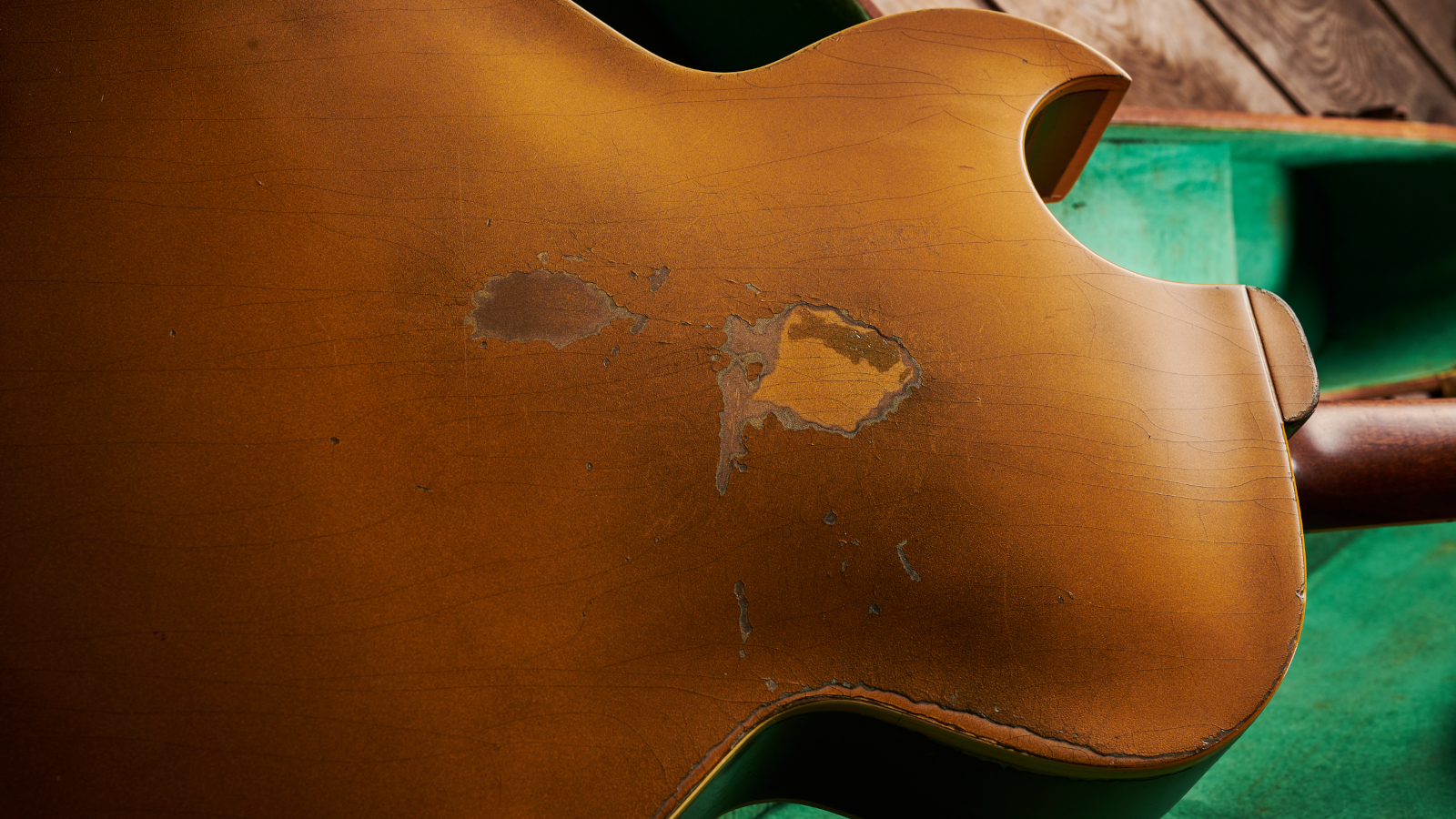
With its gold finish, cream-colored P-90s, independent pickup controls, Kluson Deluxe tuners with white plastic keystone buttons, and combination trapeze tailpiece/bridge, the ES-295 is something of an electric hollowbody equivalent of the ’52 Les Paul Model solidbody.
Indeed, Gibson ambitiously sought to market the ES-295 as such: “This golden beauty is truly a ‘royal’ instrument,” reads a Gibson catalogue. “Tone and action wise, the Gibson ES-295 measures up to its outstanding appearance; this instrument meets the demand for the slick action and sustaining power of a solid body electric in a regular-size acoustic guitar.”
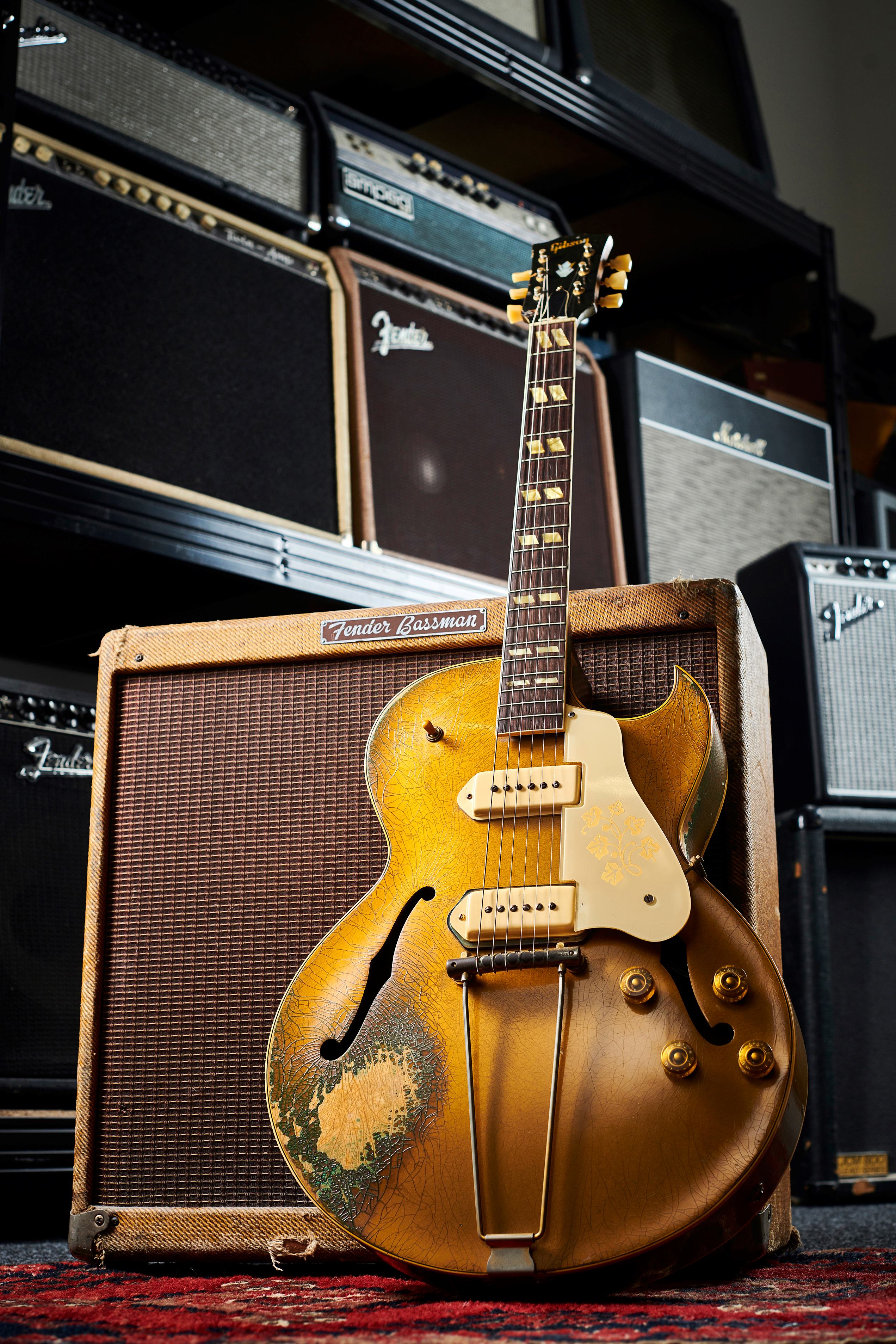
The ES-295 changed very little during its run in Kalamazoo during the '50s.
Despite sales more than doubling in its second year of production, shipping numbers indicate a steady decline in popularity until it was finally discontinued in 1958.
Even Scotty Moore and a set of PAF humbuckers introduced in late ’57 couldn’t save it!
Rod Brakes is a music journalist with an expertise in guitars. Having spent many years at the coalface as a guitar dealer and tech, Rod's more recent work as a writer covering artists, industry pros and gear includes contributions for leading publications and websites such as Guitarist, Total Guitar, Guitar World, Guitar Player and MusicRadar in addition to specialist music books, blogs and social media. He is also a lifelong musician.
Guitar Center's Guitar-A-Thon is back, and it includes a colossal $600 off a Gibson Les Paul, $180 off a Fender Strat, and a slew of new exclusive models
"We tried every guitar for weeks, and nothing would fit. And then, one day, we pulled this out." Mike Campbell on his "Red Dog" Telecaster, the guitar behind Tom Petty & the Heartbreakers' "Refugee" and the focus of two new Fender tribute models











